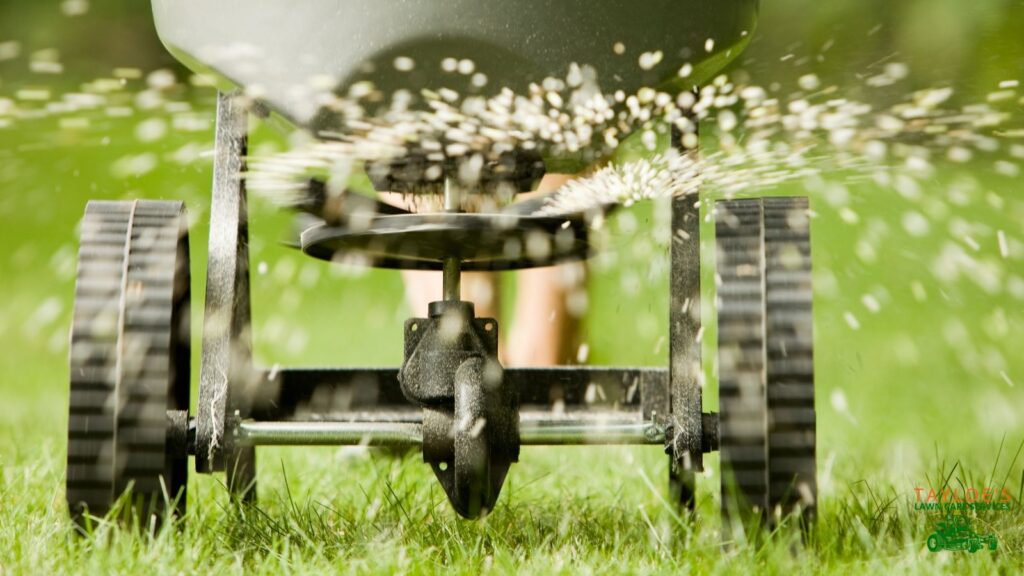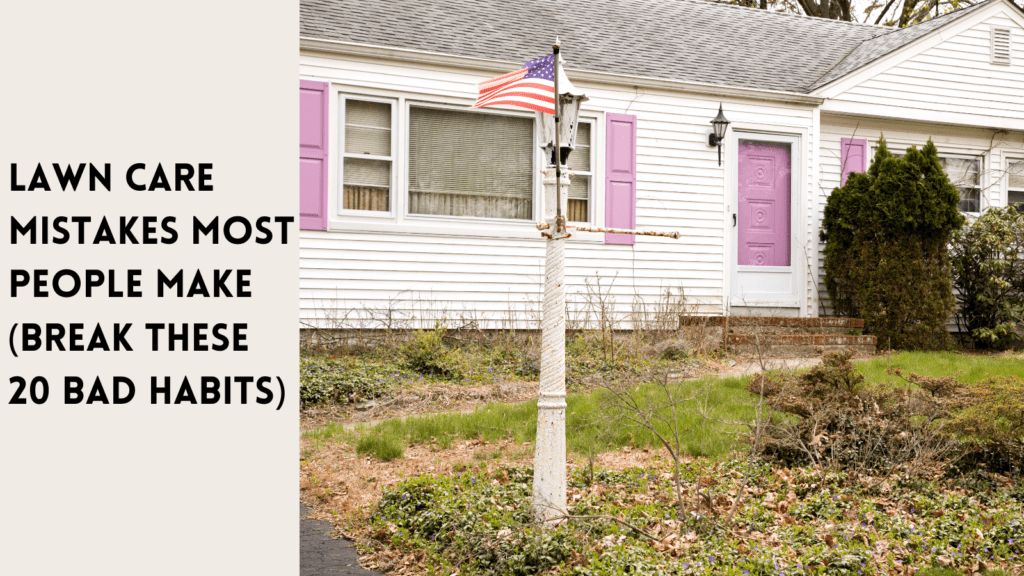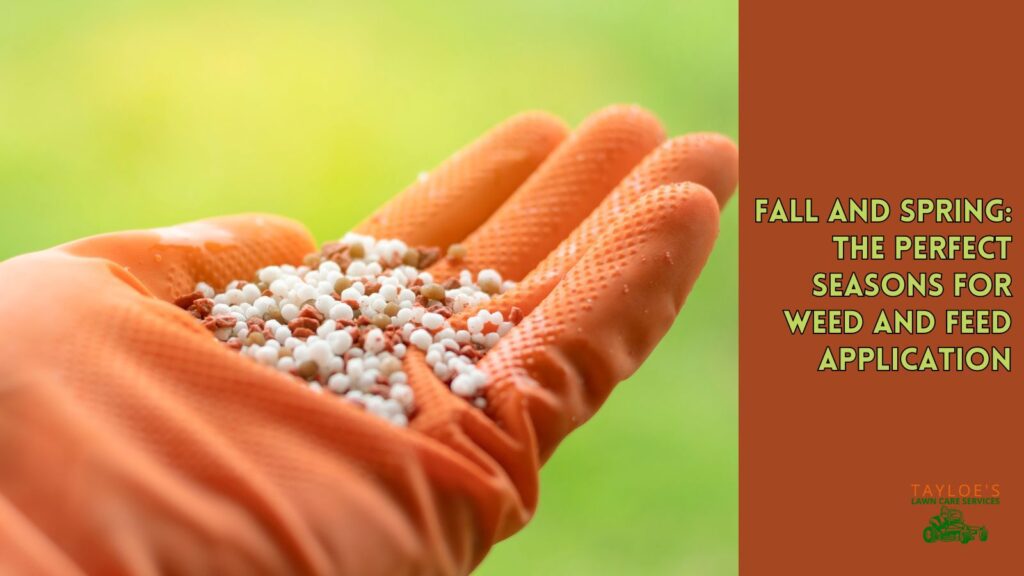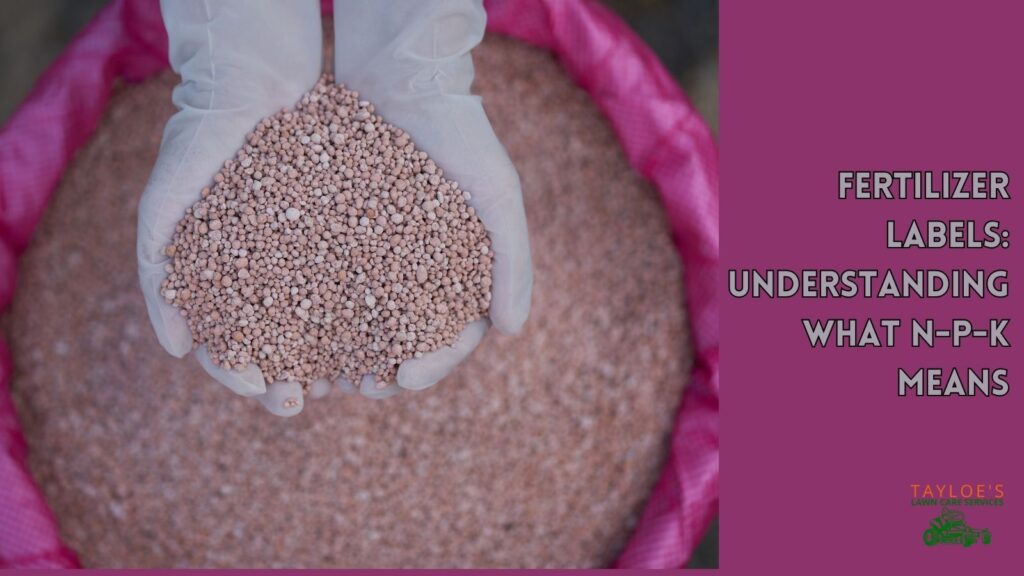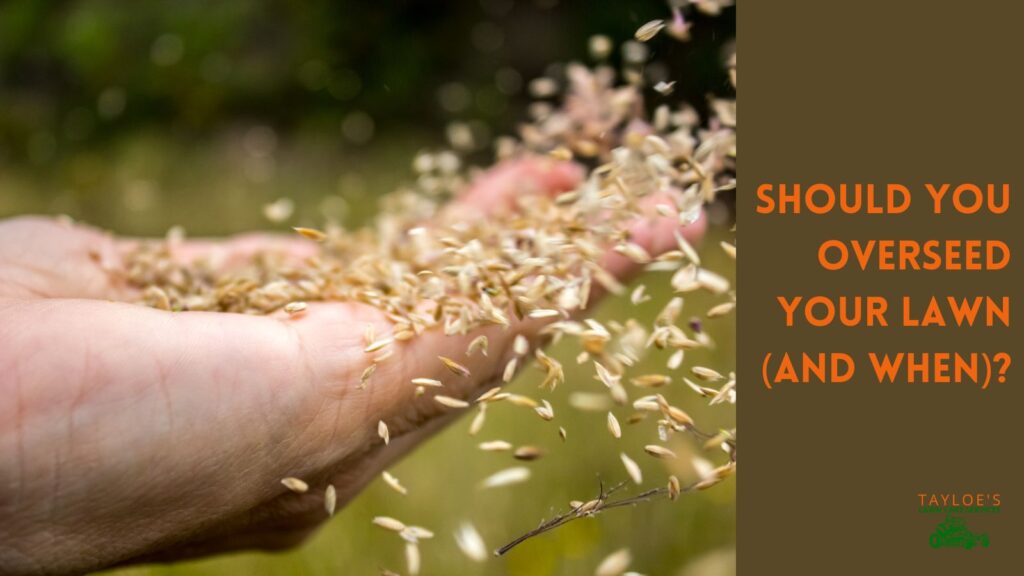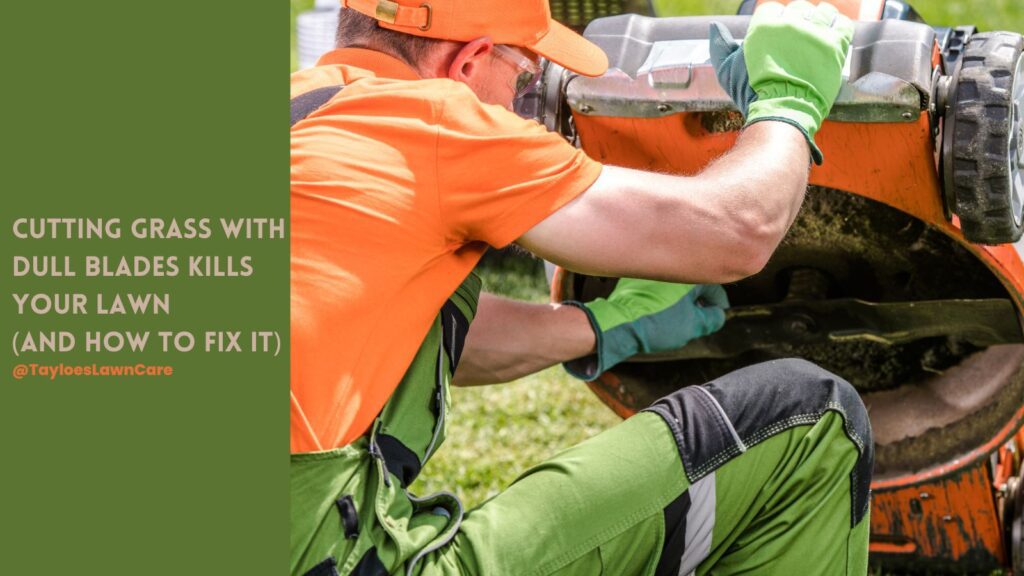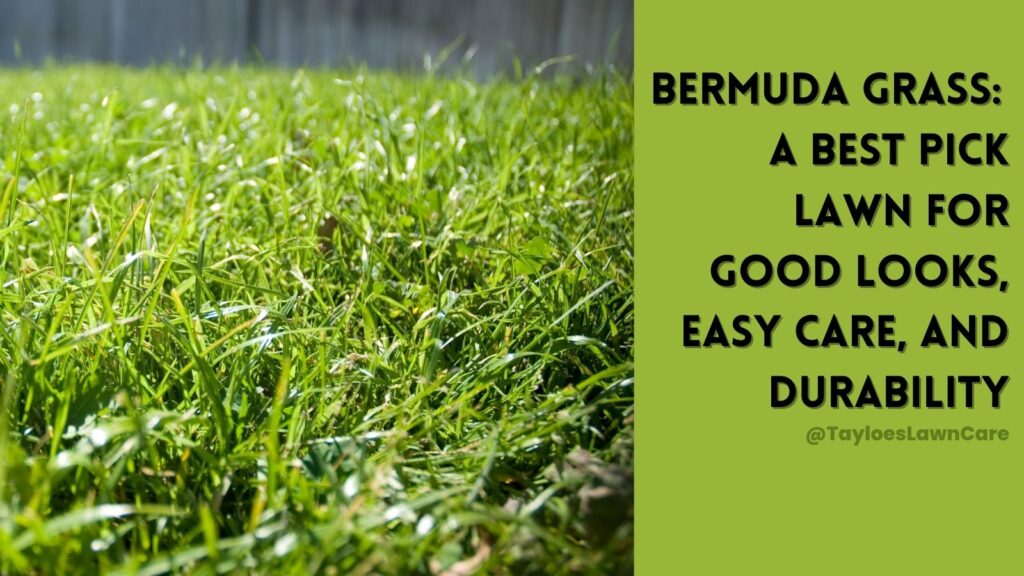Last Updated on: 16th August 2024, 05:44 am
A guide to lawn fertilizers in NC zones 7b and 8a
Lawn fertilizer—it’s the ever-resounding headache for most homeowners, garden enthusiasts, and landscapers in the quest to maintain a lush, verdant lawn in North Carolina’s Zones 7b and 8a. Looking for turf care tips?
You’re not alone…
The challenge of selecting the right product, understanding when and how much to apply, and keeping up with the best practices for turf health can, indeed, be daunting.
With factors like soil type, seasonal weather conditions, and local environmental regulations in play, it’s easy to feel lost in a sea of information.
But don’t fret!
This comprehensive FAQ guide is here to help you navigate through the confusion.
This resource, tailored specifically for the unique conditions of North Carolina’s Zones 7b and 8a, is packed with expert advice, practical tips, and clear answers to your most common and pressing questions about lawn fertilization.
Whether you’re curious about the nutrient needs of your turf, the timing for optimal application, or the best fertilizer types for your specific conditions, we’ve got you covered.
Let’s dive right in!
Your Burning Lawn Fertilizer Questions Demystified
What’s better, liquid or granular fertilizer?
Both have their charms! Liquid fertilizers give your turf a quick nutrient boost, perfect for addressing immediate deficiencies. Granular fertilizers, on the other hand, break down over time, offering a slow-release of nutrients that feed your lawn steadily.
Each excels in different scenarios.
Will using liquid fertilizer make grass grow greener than granulated fertilizer?
While liquid fertilizers can provide quicker green-up due to fast absorption, the end result of greener grass also depends on the nutrient formula and the specific needs of your lawn.
Both types can achieve lush greenness when used correctly.
When should I fertilize my lawn in NC?
In Zones 7b and 8a, your lawn’s appetite peaks in spring and fall.
Timing your fertilization with these growth spurts ensures your grass gets the most out of the feast, leading to a lush, vibrant lawn.
Avoid fertilizing during peak summer heat to prevent stress on your lawn.
How do I fertilize my lawn in NC?
Begin with a soil test to understand your lawn’s needs. Then, select a fertilizer that matches these needs.
Apply it evenly across the turf using a spreader (granulated) or sprayer (liquid fertilizer), following the recommended application rates on the fertilizer package.
Water lightly if the instructions suggest.
What is the best schedule for lawn fertilization?
A balanced diet is key. Typically, fertilizing in early spring, late spring, and early fall aligns with your lawn’s natural growth cycles, supporting robust health and stunning greenery.
How much nitrogen should be applied to lawns?
Stick to the 1-pound-per-1,000-square-foot rule for soluble nitrogen per application, ensuring you nourish the lawn without overwhelming it.
What type of fertilizer should I use on my lawn in the fall?
Opt for a fertilizer with a higher ratio of slow-release nitrogen to prepare your lawn for winter and ensure a strong, green start in spring.
This type of fertilizer will nourish your lawn gradually as the temperatures drop, focusing on strengthening the roots rather than pushing top growth, which can be susceptible to frost damage.
Ideal formulations might include an NPK ratio emphasizing nitrogen, such as 24-0-10, where the high nitrogen content encourages root development without promoting excessive leaf growth that won’t survive the winter. This approach ensures your lawn is well-fed and protected during the colder months, ready to bounce back with vigor once spring arrives.
One thing to keep in mind, though, is that your lawn’s specific needs might vary, so it’s always a good idea to conduct a soil test before applying any fertilizer.
How soon can you fertilize after seeding?
Wait until you’ve mowed the new grass at least once before applying fertilizer. This usually means waiting 4 to 6 weeks after the seeds have germinated.
Early fertilization can burn tender young grass.
Is it best to fertilize in the morning or afternoon?
Morning is your best bet. It allows the fertilizer to settle in and start working before the day’s heat, reducing the risk of evaporation or scorch.
Is it better to fertilize before rain or after?
After a light rain is ideal. The moisture helps the soil absorb the nutrients, but if heavy rain is forecasted, hold off – you don’t want all that goodness to wash away!
What fertilizer to use on new grass?
A starter fertilizer rich in phosphorus is your go-to. It encourages strong root development and helps your new grass establish more quickly.
Can you put fertilizer on wet grass?
It’s best applied to dry grass to prevent clumping and ensure even distribution. However, unless you’re using a water-soluble product, be sure to water it in well after applying.
Does urea make grass greener?
Yes, urea is a high-nitrogen product that can significantly green up your turf, but it’s potent, so apply it carefully to avoid burning your grass.
How fast does urea work on lawn?
Urea acts quickly; you might see results in just a few days. However, its fast action also means it can quickly leach away, so timing and correct application are crucial.
To maximize urea’s rapid nutrient delivery, apply it when your lawn is dry and forecast to remain so for at least 24 hours. This will allow the urea to be absorbed properly.
Water lightly after application to help the urea to penetrate the soil, but avoid heavy irrigation that might wash the nutrients away before the grass roots can utilize them.
Additionally, applying urea during cooler parts of the day can reduce the volatilization loss, ensuring that more nitrogen reaches your lawn.
What if it rains right after I fertilize?
A light rain can help the fertilizer penetrate the turf and reach the soil. However, you might need to reapply if a heavy rainstorm washes it away. It’s all about timing and a little bit of luck with the weather.
Should you water your lawn after it has been fertilized?
Yes, watering after fertilizing helps activate the fertilizer and ensures the nutrients reach the soil, which your lawn’s roots can absorb.
Why is my grass turning yellow after fertilizing?
This could be due to over-fertilization (fertilizer burn) or a reaction to a specific nutrient or chemical in the fertilizer. Ensure you’re applying the correct amount, and consider a soil test to check for imbalances.
What is the best fertilizer to turn yellow grass green?
A balanced, slow-release nitrogen fertilizer is your best bet, providing steady nutrition without the risk of burning.
Will grass grow back after too much fertilizer?
It can, but it may take time. Water the area to help flush out excess fertilizer and avoid re-fertilizing until the grass fully recovers.
Does lawn fertilizer make a difference?
Absolutely! Lawn fertilizer provides essential nutrients that might be lacking in your soil, promoting healthier, denser, and greener grass. However, choosing the right type and applying it correctly is vital.
How do I take care of my lawn in NC?
Regular mowing at the correct height, consistent watering, seasonal aeration, and proper fertilization according to your lawn’s specific needs–are the key components of a healthy lawn care regimen in these zones.
Also, stay alert to the changing seasons and adapt your lawn care practices accordingly, ensuring your turf is healthy year-round.
Talking of healthy grass all year round…
Let’s be honest: while you’re now well-equipped with essential knowledge for maintaining a flourishing lawn in North Carolina’s Zones 7b and 8a, executing these practices perfectly can be as challenging as mastering the art itself.
Lawn Care is Not Just About the Routine of Applying Lawn Fertilizer, Aerating, and Mowing…
It’s about responding precisely to your turf’s unique needs, ensuring it thrives every season.
Understanding the specifics of fertilization, the right timing and your lawn’s precise needs will set you on the right path.
Yet, the true essence of a magnificent lawn lies in the expertise that only seasoned professionals can offer. This expertise transforms your lawn into a vibrant canvas that reflects the beauty and care you envision.
The specialists at Tayloe’s Lawn Care Services are not just experts in their field. Rather, we are caretakers of your green oasis. We offer state-certified applications tailored to your area’s unique climatic conditions.
Their nuanced understanding of local ecosystems, soil types, and lawn health intricacies ensures your lawn is maintained and flourishing.
Integrating Tayloe’s professional lawn care services complements your dedication, enhancing the beauty and health of your lawn beyond the ordinary. It’s about making an informed choice for excellence and ensuring that your lawn is a source of pride and joy throughout the year.
Embrace the pinnacle of lawn perfection by entrusting your lawn to Tayloe’s Lawn Care Services.
Contact us today for professional, state-certified lawn care that guarantees a lush, vibrant, and beautifully maintained outdoor space. You can call or text us at 252.287.3376. We take care of lawn care in Ahoskie, Aulander, Murfreesboro, Windsor, and all of Bertie County.
Your lawn care needs are unique, and it can be exceptional with Tayloe’s Lawn Care Services.
It’s not just about maintaining. Instead, it’s about thriving, about creating an outdoor space that stands out with its unparalleled beauty and health every day of the year.
Author Profile

- Maureen Abuor
- Maureen Abuor is a professional content marketing strategist and SEO strategist, with particular knowlege of creating landscaping and gardening content that informs and delights her audience. When she's not working, she's a busy mother of three precious little ones and child of God.
Latest entries
 Lawn CareApril 29, 2025Best shady area grass seed for Eastern NC
Lawn CareApril 29, 2025Best shady area grass seed for Eastern NC GardeningApril 15, 2025How do I make organic soil for the garden?
GardeningApril 15, 2025How do I make organic soil for the garden? Flower GardenMarch 7, 2025What are wave petunias?
Flower GardenMarch 7, 2025What are wave petunias? Flower GardenMarch 3, 202520 Full-sun annuals for your spring and summer garden
Flower GardenMarch 3, 202520 Full-sun annuals for your spring and summer garden

